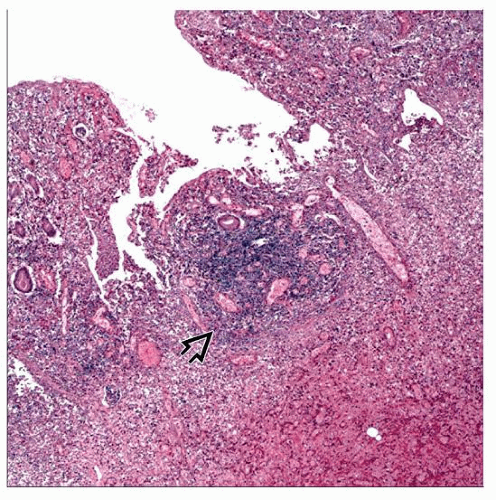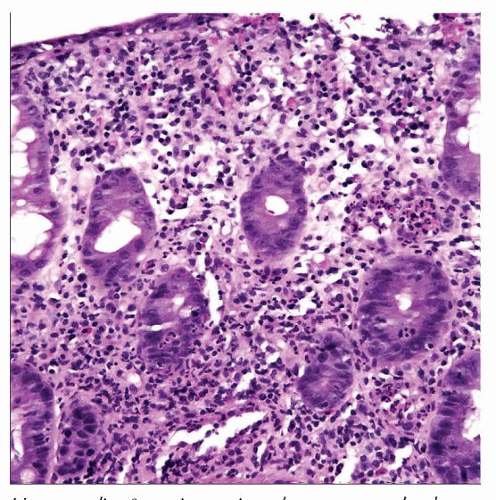Salmonella
Laura W. Lamps, MD
Key Facts
Terminology
Transmitted through contaminated food and water
Generally divided into 2 groups: Typhoid and nontyphoid species
Clinical Issues
Fever
Abdominal pain
Diarrhea
Macroscopic Features
Typhoid fever
Raised nodules corresponding to hyperplastic Peyer patches
Aphthoid, linear, or ovoid ulcers
Nontyphoid infection
Mucosal erythema, hemorrhage, ulceration, exudates Microscopic Pathology
Typhoid fever
Hyperplasia of Peyer patches, followed by inflammation, ulceration, necrosis
Inflammatory infiltrate, typically mononuclear neutrophils, less common
Nontyphoid infection
Usually shows features of acute infectious-type colitis
Diagnostic Checklist
Both typhoid and nontyphoid infections may mimic chronic idiopathic inflammatory bowel disease
Cultures critical to diagnosis
TERMINOLOGY
Synonyms
Salmonellosis
Typhoid fever
Definitions
Infection by gram-negative bacteria Salmonella
Transmitted through contaminated food and water
Meat, dairy products, eggs/egg products, produce
Survive partial cooking, freezing, drying
Can be acquired from animals
Causes sporadic food poisoning, traveler’s diarrhea in industrialized countries
Generally divided into 2 groups
Typhoid serotypes or species: S. typhi, rarely S. paratyphi
Nontyphoid serotypes or species: S. enteritidis, S. typhimurium, S. muenchen, S. paratyphi, S. newport, and others
ETIOLOGY/PATHOGENESIS
Risk Factors
Poor sanitation
Low gastric acidity
Immunocompromise
CLINICAL ISSUES
Presentation
Fever
In typhoid fever, generally arises over several days
Abdominal rash (rose spots), hepatosplenomegaly, leukopenia common in typhoid fever
Stay updated, free articles. Join our Telegram channel

Full access? Get Clinical Tree





